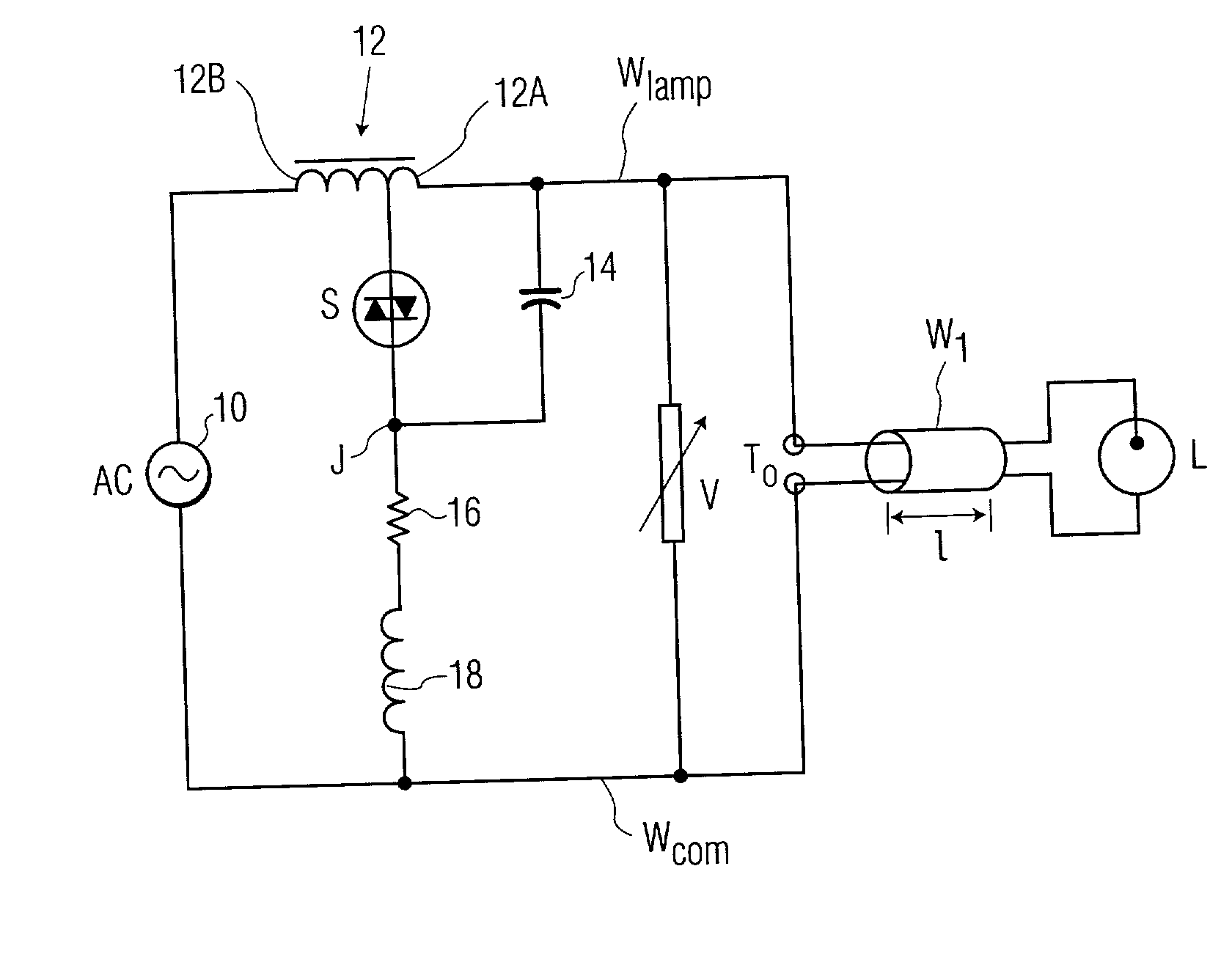Lamp ignition with automatic compensation for parasitic capacitance
- Summary
- Abstract
- Description
- Claims
- Application Information
AI Technical Summary
Benefits of technology
Problems solved by technology
Method used
Image
Examples
Embodiment Construction
)
[0015] FIG. 1 illustrates an exemplary embodiment of an electro-magnetic ballast which incorporates the invention. This ballast includes an AC source 10 and an autotransformer 12 electrically connected in a first series loop with a gaseous discharge lamp L via a lamp supply conductor W.sub.lamp, a common conductor W.sub.com, and a length of two-conductor cable W.sub.l extending from output terminals T.sub.o of the ballast to the lamp L. The autotransformer is formed from a ballast inductor having a primary winding 12A and a secondary winding 12B. A bidirectional voltage-sensitive switch S is electrically connected in a second series loop with a capacitor 14 and the primary winding 12A. In this embodiment the switch S is a sidac. A resistor 16 and an RF blocking coil 18 are electrically connected in series between a junction J (connecting one side of the sidac S and the capacitor 14) and the common conductor W.sub.com. A varistor V is electrically connected between the lamp supply c...
PUM
 Login to View More
Login to View More Abstract
Description
Claims
Application Information
 Login to View More
Login to View More - R&D
- Intellectual Property
- Life Sciences
- Materials
- Tech Scout
- Unparalleled Data Quality
- Higher Quality Content
- 60% Fewer Hallucinations
Browse by: Latest US Patents, China's latest patents, Technical Efficacy Thesaurus, Application Domain, Technology Topic, Popular Technical Reports.
© 2025 PatSnap. All rights reserved.Legal|Privacy policy|Modern Slavery Act Transparency Statement|Sitemap|About US| Contact US: help@patsnap.com



